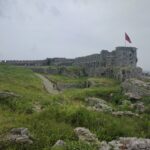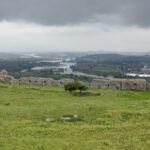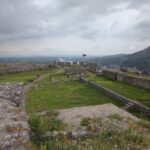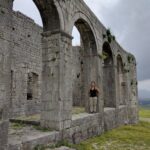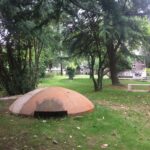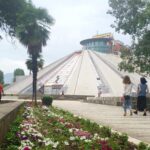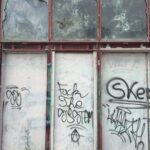I’ll be honest. Compared to other major cities in any European country, Shokoder and Tirana were quite abysmal, but I can’t blame a recent post-communist/post-totalitarian country for not offering much to the wandering traveller. Sure, there were notable sites of interest, and I describe a few below.
Albania’s northernmost major city, Shkoder, serves as a base for exploring the Albanian Alps. Aside from being the typical dusty, congested Balkan city dotted with shops, mosques, and churches, its main attractions are the massive Shkodra Lake and the Rozafa Castle. Perched atop a hill in the outskirts of the city, most of the castle remain in ruins that are easily explorable due to the lack of tourists who visit. The castle’s history was dizzying to me–its history includes sieges from the Romans, to the Ottomans, to the Montenegrins. For only 200 Lek each, we scouted the ruins and gazed down below at the views of Shkoder, the surrounding valley, and the river.
Just at the foot of the Rozafa ruins stands the lonely Lead Mosque, its name derived from the lead that once covered all of its domes. All the lead had been stolen gradually.
This mosque is currently not in use, but is of minor historic significance: in 1990 when religion was allowed in the country again (the anti-religious communist leader had declared statewide atheism in 1967), the very first religious rally was held here.
After visiting the Rozafa castle and the Lead Mosque, we continued south to see what Tirana had to offer. We stayed at Baron Hotel, which offered motorhome parking. electricity, and a shower/toilet for €17/night. There was also a bus stop down the street with buses that took us into the heart of Tirana for only 40 Lek each (33¢). My favorite thing about Tirana (and all of Albania actually) was the number of bakeries everywhere selling fresh loaves of bread for 50 Lek (40¢)!!!
Around Tirana’s Skanderbeg Square was the National Historical Museum. We didn’t go in, but its exterior mural was captivating. 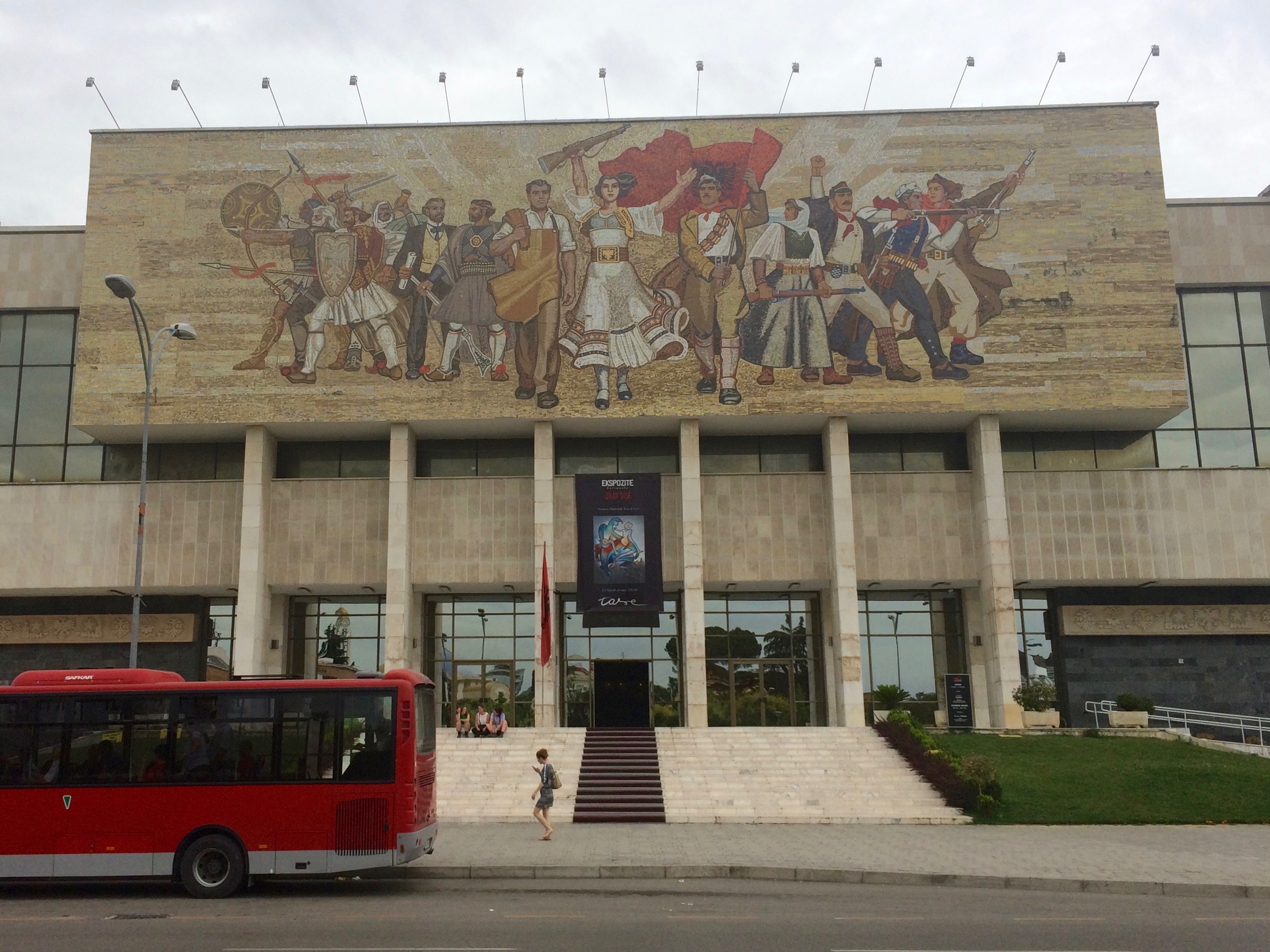
Et’hem Bey Mosque also has historic significance: thousands attended a rally to reopen the mosque in 1991 before authorities even permitted them to do so, signaling the fall of communism and rebirth of religious freedom in the country. 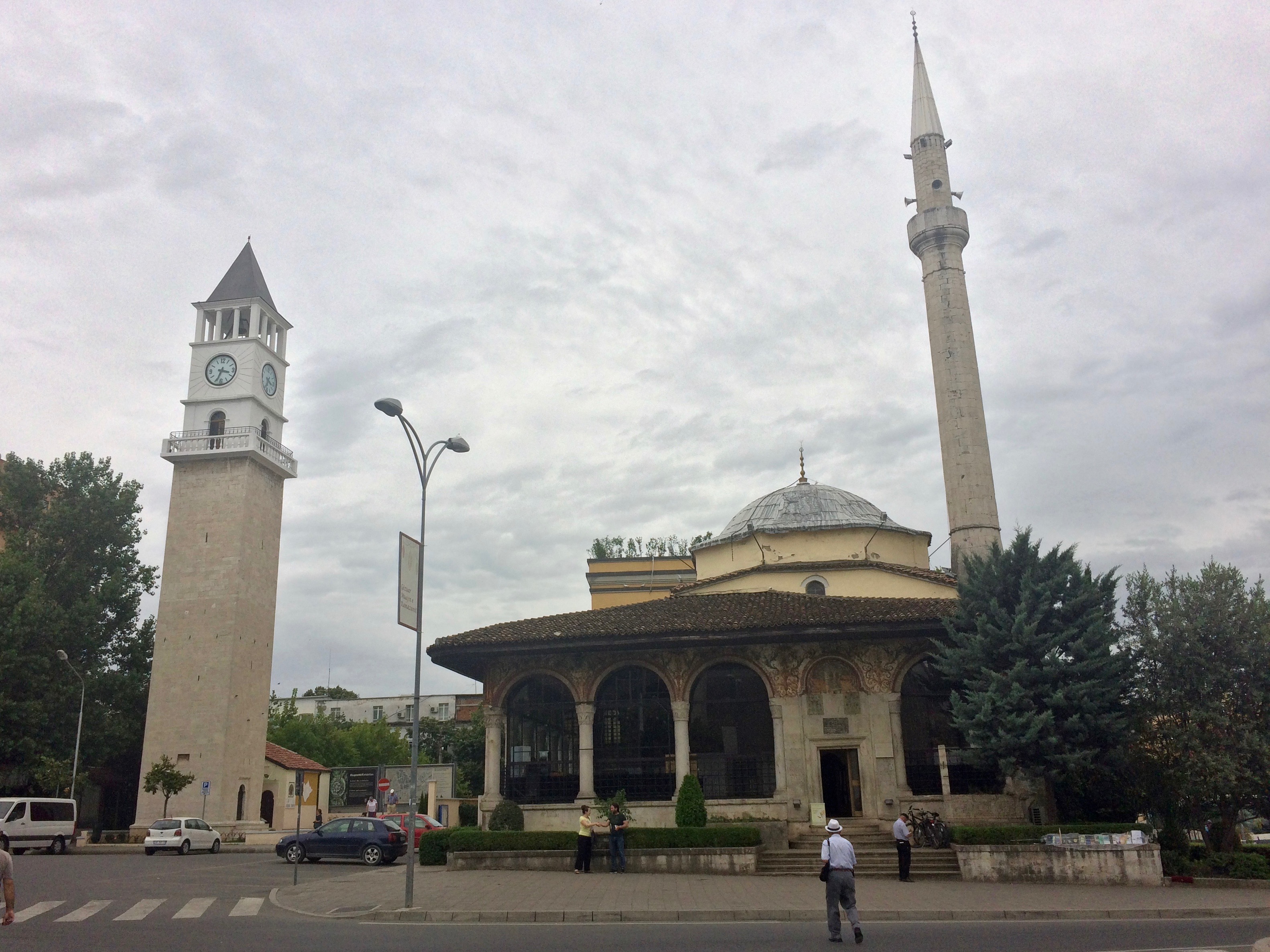
Grungy streets:
Near the Ismail Qemali Monument, the remains of three pillbox bunkers lay scattered within the small, grassy park. When the communist leader severed relations with China, he feared the country would be raided by neighboring countries and established over 700,000 bunkers throughout Albania. We definitely saw a few pillbox bunkers randomly on the side of the road while driving throughout the country. This one in particular was even paired with a section of the Berlin Wall–a gift from Germany signifying a post-communist era.
Down the street from these bunkers was my favorite historic site of all. See it whichever way you want, whether an eyesore or a grand monument, but its meaning is still symbolic nonetheless. The daughter and son-in-law of the late communist leader designed this pyramid structure to commemorate his legacy. It opened in 1988 as a museum of the leader, but quickly became a conference center in 1991. Since then the structure has been completely vandalized, with bad graffiti and smashed windows as the typical facade of the structure.
Post-communist era aside, Tirana has grown into a busy, thriving capital for Albania. Not only were there plenty of inexpensive cafes and restaurants, there was plenty of art as well. One piece in particular, was a temporary exhibit we happened to stumble upon while walking around the city.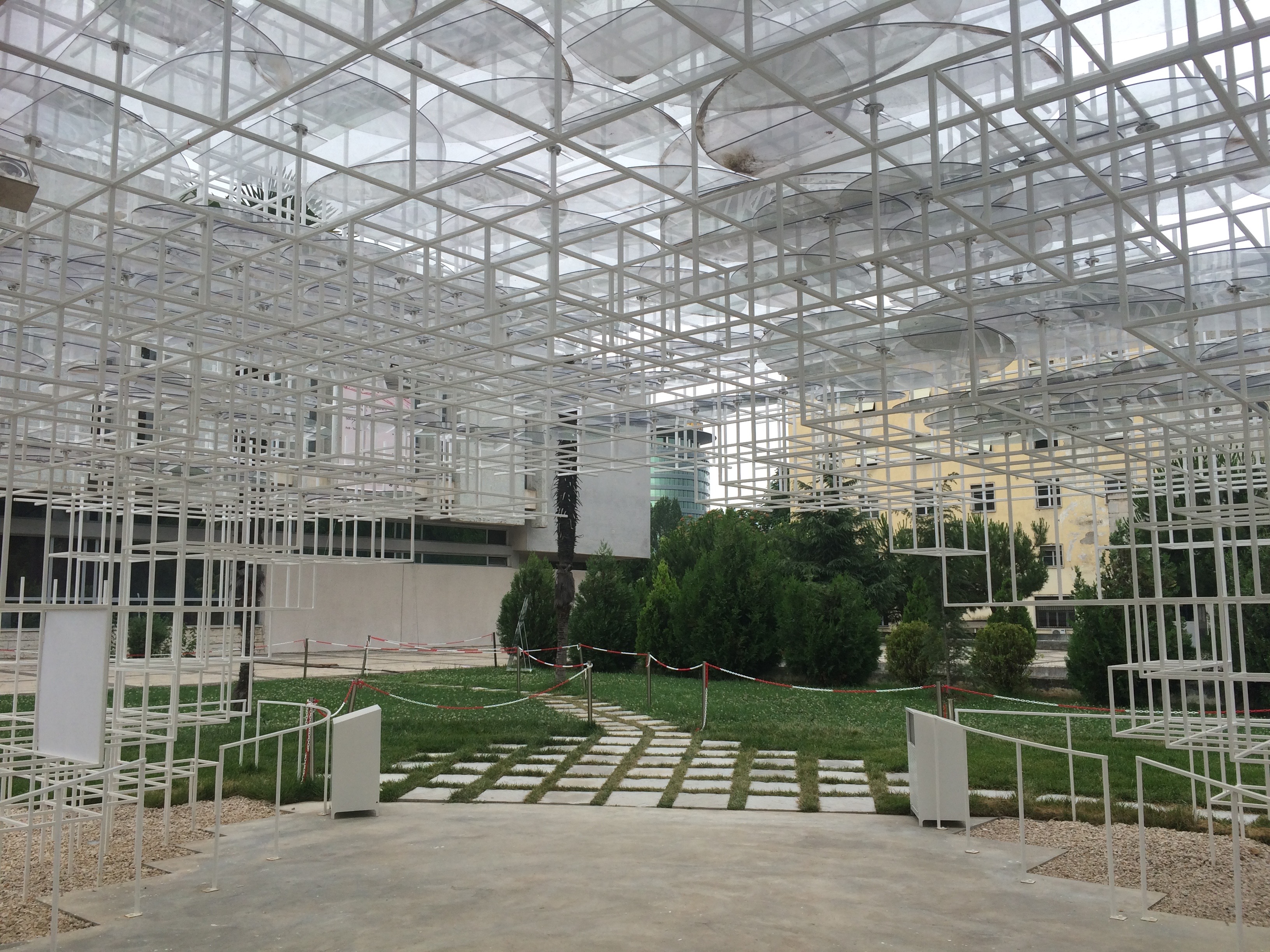
Albanian pride was also strong and flaunted, mainly because of the Eurocup football matches that were taking place at the time.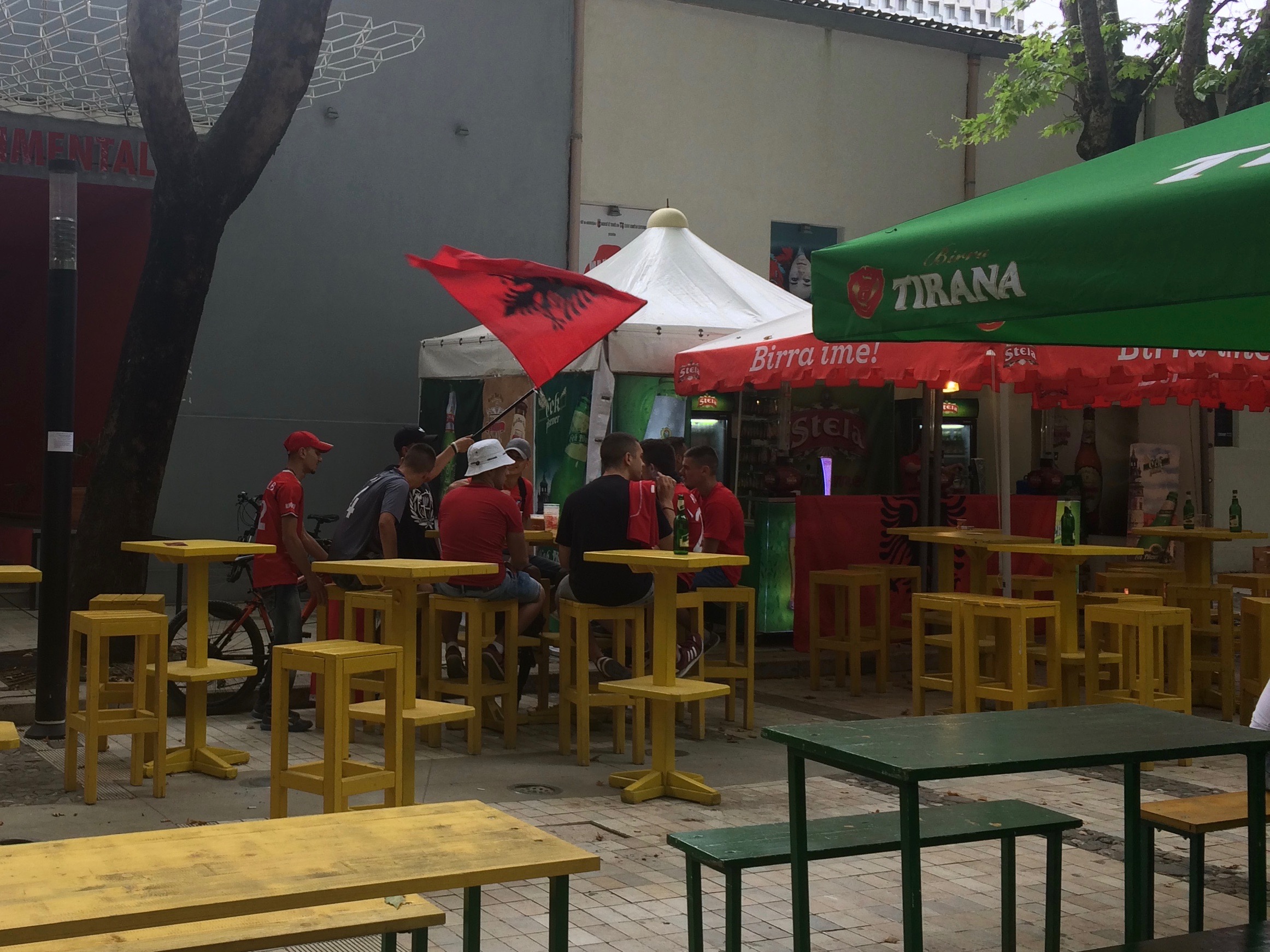
Friends told me that Tirana was worth checking out, and I’m glad we stopped by. It’s always fascinating to get a taste of a country’s historic, cultural, and economic center, especially after the country’s survival of a horrifically fascinating anti-religious regime. Almost everyone who comes to Albania will visit Tirana either way, whether arriving or departing, so one might as well see its historic sites of significance. However, Albania’s true highlights lie in the far north and the far south.

